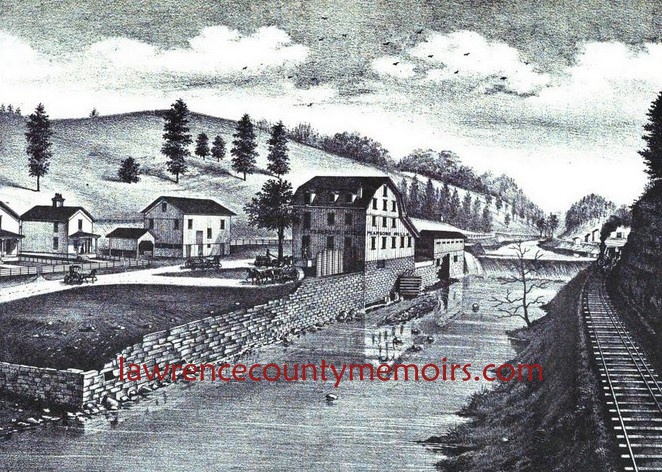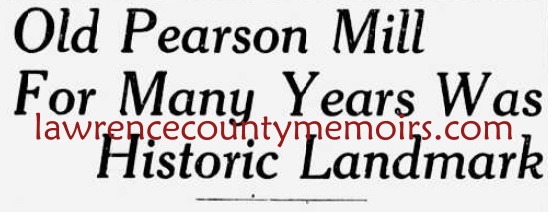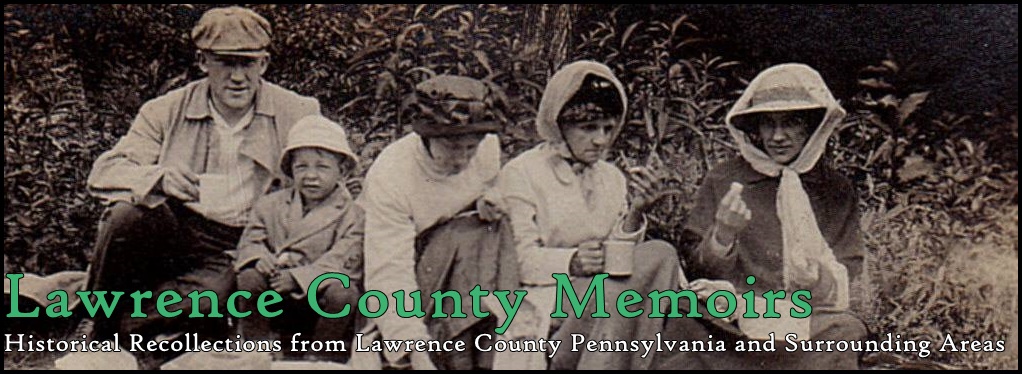
Henry Pearson (1798-1872), a Quaker who came from the Delaware County, purchased property on the Neshannock Creek at the site of the modern-day Paper Mill Bridge. In the early 1830’s he erected a saw mill at this location that was powered by a nearby dam (located upstream). It was difficult to sustain business at the remote location as patrons could only access it by a rough trail, which later became Pearson Mill Road (generally renamed as Cascade Street in 1901). Pearson fought city officials for years to improve the road leading in. In 1868 he sold this property to men who erected a paper mill, which was sold again in 1887 and became the Dilworth Paper Company. About a decade earlier, in 1856, Pearson had acquired a grist mill not far downstream and closer to New Castle. It had been in operation since at least 1810 and was located near where modern-day Neshannock Avenue intersects with Rural Avenue. Pearson rebuilt the grist mill and dam (shown above) and operated a successful business known as Pearson Mill. In 1868 he sold the mill, which he had referred to as the “Lower Mill,” to his sons Bevan and Warner Pearson and his son-in-law Capt. John M. Clapp. They continued to operate the grist mill (for a time as Pearson, Clapp, & Company) on a regular basis until about 1888. The dam was washed away during high waters on March 1, 1895, and the property was soon sold to George V. Boyles to make way for the future development of roads and homes. In early 1897 workers began tearing down parts of the old mill, erasing a landmark well-known to the Old Timers of New Castle. (1870) |






Comments
There are currently no comments on this article.
Comment